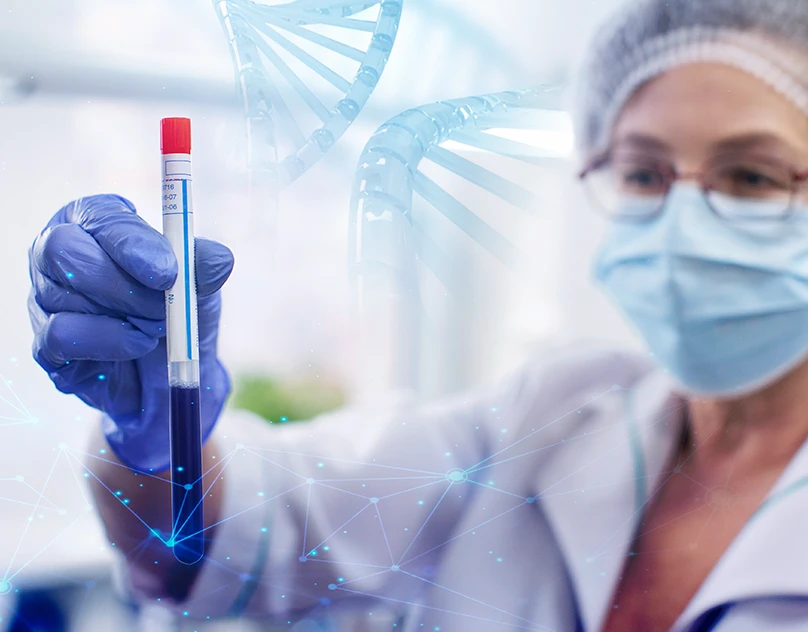

The State of Genetic Testing in 2025: Trends, Insights, and Future Forecasts
Today, a cotton swab and a postage stamp can reveal more about a person’s biology than generations of physicians ever could. Individuals now send off a small sample and receive information that touches nearly every part of their lives: how they react to food, which medications might suit them, inherited health risks, and ancestral background. What once felt cutting-edge has, for many, become routine. Some see this as long overdue. Others still view it as a quiet evolution.
What stands out even more is how this technology has moved from the margins into the center of personal decision-making. Genetic testing is no longer limited to early adopters or medical specialists. It has become part of how people think about wellness, plan for the future, and take care of those they love. The results show up in daily tools, enter medical conversations, and influence choices that used to rely on guesswork, from meal planning to fertility support.
Beneath the technology is a deeper change that receives far less attention: the return of control to the individual. More people are moving away from broad generalizations and looking for guidance rooted in their genetic information. They are asking better questions, and they expect answers that reflect something real. This may change how people see themselves and how they relate to the systems that surround them. When someone says, “I understand what I carry,” they’re speaking to both a scientific truth and a personal one. 
Origins and Early Trends of Genetic Testing
Initial limitations
Early genetic testing was limited to research labs and select clinical settings. It was slow, expensive, and used only for cases involving serious genetic disorders or unclear diagnoses. At-home testing was unheard of, but the concept of decoding DNA to inform health decisions began to gain traction.
Breakthrough via ancestry kits
Ancestry-focused DNA kits marked the first time genetic testing felt accessible to the general public. Framed around family history and ethnic background, these kits offered something people could connect with and gave them a way to learn more about where they came from. As users began to receive results and share their experiences, curiosity grew into familiarity. The idea of exploring one’s DNA suddenly became a tool that helped people reflect on their identity in a new way.
Shift toward health insights
As public interest deepened, consumer expectations evolved. People began to explore how their DNA could reveal more about their health, such as how they processed food, how they might respond to medication, and their predisposition to chronic illnesses. It was the beginning of a new phase where genetics have the ability to influence everyday choices.
Genetic testing was no longer a novelty by the early 2020s. Mailing in a saliva sample and receiving detailed results became a common health activity. People began to use these insights to manage wellness, prepare for long-term care needs, and better support family members. Hence, genetic data transformed from being a curiosity to a routine part of personal health management.
Rise of Consumer Genetic Testing

Current Market Growth and Projections
The market is anticipated to reach USD 24.45 billion in 2025. Forecasts suggest that the figure could climb past USD 65 billion by 2034. Several forces are driving this expansion, including advancements in sequencing technology, rising rates of chronic illness, and increased awareness across all age groups.
North America remains the largest market, holding just over half of the global share in 2024. That’s largely due to strong healthcare infrastructure and early consumer adoption. But momentum is shifting. In the Asia-Pacific region, faster economic growth, larger investments in public health, and rising awareness around preventive care are fueling adoption at a much steeper rate.
Asia-Pacific is expected to register a CAGR of 25.7% from 2024 to 2032, making it the fastest-growing regional market for genetic testing.



Genetic Testing: Key Developments on the Road to 2025
Recent years have brought steady progress in the tools used to read, analyze, and apply genetic information. What once took months in a research lab can now be done in a clinical setting, sometimes in days. They are changing how diagnostics, treatment planning, and health monitoring work in practice.

Next-generation sequencing and beyond
Next-generation sequencing (NGS) is no longer a breakthrough. It’s the new standard, enabling full genome analysis with greater speed and lower cost than older approaches. That affordability has made it possible to offer broader testing in clinical environments, including primary care.
Long-read sequencing is also gaining attention. Unlike short-read methods, it’s better at identifying structural changes and hard-to-detect variants. These differences may be subtle on paper, but they matter in diagnosis, especially for rare or complex conditions.
The deeper view provided by long-read technologies is already changing how some conditions are understood and tracked.
AI and ML
The role of AI and ML in genetic testing is not experimental anymore. Intelligent algorithms now comb through massive volumes of genomic data, finding patterns that wouldn’t appear obvious otherwise. These tools help identify links between genes and outcomes, speeding up interpretation and reducing guesswork.
In India, researchers at IIT Indore have built a quantum AI platform designed to catch genetic mutations early, including those linked to cancer. It merges quantum computing with explainable AI, creating a system that is both precise and efficient. The goal is to bring this kind of analysis closer to routine use, not just in large hospitals but eventually in smaller clinics.
CRISPR and gene editing
Gene-editing tools have advanced quickly, and CRISPR remains at the center of that work. Scientists are using it to study how specific genes behave and how they might be linked to particular conditions. Methods like base editing and prime editing are helping to expand this research into areas that once seemed out of reach.
These tools are not just about future treatments. They’re also improving how genetic testing works by helping researchers refine what they look for and how they report it. The knowledge gained is feeding back into diagnostics, making tests more informative and, in some cases, more actionable.
Liquid biopsies and non-invasive testing
Blood-based genetic testing is opening new doors in cancer detection. Liquid biopsies, which search for tumor DNA or other genetic markers in blood, offer a far less invasive option compared to traditional tissue samples. They’re being used not only to detect cancers earlier but also to track how patients respond to treatment.
The UK’s National Health Service is currently testing a blood-based screening method, miONCO-Dx, built by the University of Southampton in partnership with Xgenera. It targets 12 common cancers and uses AI to read microRNA markers. Initial studies involving 20,000 people reported an accuracy rate of 99%.
Integration of wearable technology
Genetic testing is beginning to connect with the growing world of wearable devices. Sensors that monitor heart rate, sleep, and activity are paired with genetic profiles to offer custom feedback. It supports more targeted health recommendations while making it possible to execute real-time adjustments that reflect someone’s genetic tendencies.
The idea is to extend, not replace, traditional care. When matched with a person’s genetic profile, the data from wearables can help spot early signals. It can also reinforce positive habits and personalize daily health decisions in a way that one-size-fits-all advice never could.
Emergence of game-changing innovators
The expansion of genetic testing owes much to early movers and sustained innovators across different segments. In the ancestry space, 23andMe and AncestryDNA brought DNA testing to millions of households worldwide. Then, companies like Invitae and Myriad Genetics led the way in clinical-grade testing, offering detailed reports on inherited conditions. This aligned with the prevailing consumer interest in health and wellness.
In Asia, players such as MedGenome and Prenetics adapted these tools to regional health needs, increasing awareness and access. New entrants like Nebula Genomics and Dante Labs have pushed the boundaries further by integrating blockchain, deep sequencing, and privacy-focused models.
Regulatory and ethical considerations
As far as genetic testing is concerned, regulatory and ethical frameworks are under growing scrutiny. Countries like the U.S., Australia, and members of the EU have taken steps to safeguard genetic data, with varying degrees of progress. Recent events, such as high-profile data breaches and company bankruptcies, have only amplified public concern and calls for more regulation.
Furthermore, there’s an effort to address the deeper ethical challenges. These include ensuring privacy and consent, addressing discrimination risks, and expanding equitable access to testing. Experts have emphasized the need for enforceable data governance standards and ethical oversight, while also urging greater community engagement to align policies with public expectations.
Major Enablers of Genetic Testing Growth

Key Trends in Genetic Testing for 2025
Preventive testing
By 2025, genetic testing has become a routine part of how health systems plan. Instead of being used solely after symptoms surface, genomic data is now playing a central role in predicting which individuals are more likely to face certain health risks. Clinicians use these insights to suggest early screenings or interventions, especially for conditions known to have genetic links. The emphasis is changing from treatment to prediction, from managing disease to staying ahead of it.
Governments are starting to formalize this approach. In South Korea, for instance, national programs have begun to use genetic screening to detect early signs of cancers that are especially common in the population, such as breast and gastric cancer.
Health insurers in parts of Europe and Asia are beginning to include genetic testing in their coverage, especially for conditions like cardiovascular disease and neurological disorders. Their approach is shaped by a simple idea: early knowledge can prevent bigger problems later. It means that these providers are betting on a model where prevention reduces both treatment costs and health complications down the line.
 Expanded scope of testing
Expanded scope of testing
Genetic testing first captured public attention through ancestry services, but its role today is far more health-focused. People are turning to these tools not out of curiosity but to learn more about how their bodies work and how they might respond to food, medication, or long-term health risks.
Recent surveys show that by 2025, most people who use direct-to-consumer test kits are doing so to understand potential medical risks, fine-tune fitness and nutrition choices, or explore how their DNA might influence day-to-day well-being. Tests that once focused on where our ancestors came from are now being used to inform how we live, eat, and age.
Nutrition-based DNA analysis, for example, has become especially popular. People want guidance on how their body processes specific foods, how likely they are to have intolerances, and whether their genetic makeup plays a role in energy, weight, or metabolism. The same is true for fitness-related testing, which has sparked interest among those seeking personalized training and recovery plans.
Synchronization with digital health platforms
A art of what’s fueling this transition is how well these services connect with other digital tools. Apps that once tracked workouts or calories now integrate genomic results, offering custom suggestions based on someone’s unique profile. So, a person who previously relied on generic health advice may now receive daily tips aligned with their genetic background about sleep, movement, stress, and more. Some of the most common use cases include:

The ongoing feedback loop between testing and health apps has made the experience feel less transactional and more like an ongoing relationship.
Shift toward subscription and membership models
The consumer genetic testing space is moving steadily away from one-time kits and toward ongoing subscription-based models. It is helping companies build longer-lasting relationships with users by offering regular updates to their reports, new findings from recent studies, and personalized guidance based on genetic results.
It also creates more touchpoints for engagement, which ends up adding meaningful value over time and encouraging stronger brand loyalty.
Subscription models also support incremental revenue spurts, with consumers increasingly receptive to regular genomic updates, supplementary reports, and personalized healthcare recommendations. Providers now bundle genetic testing services with telehealth consultations and premium digital services.
Helix and CircleDNA were among the first to adopt a subscription-based approach, offering regular updates and continuous insights based on new genetic research. Nebula Genomics introduced blockchain-secured memberships where users receive genome-wide data and pay for updates.
Accelerated adoption in emerging markets
While North America and Europe continue to dominate market share, adoption is growing rapidly in places like China, South Korea, and India. In China, for instance, government-backed awareness campaigns and partnerships with health-tech companies have helped normalize the idea of using DNA insights for personal decision-making.
Much of the demand is being driven by younger, urban populations who are already comfortable with digital tools and lifestyle tracking.
Privacy and data security
As more people turn to genetic testing, concerns about how their data is handled have grown alongside that interest. Many now look closely at whether companies are clear about who can access their information, how it’s stored, and what safeguards are in place.
In response, several major testing providers have stepped up their security efforts. They’ve introduced stronger data protections and built more transparent systems, hoping to earn trust in an area where confidence matters as much as accuracy.
Consumers in 2025 show a clear preference for providers that prioritize ethical responsibility, offer transparent consent procedures, and maintain strong safeguards for genetic data. Companies that invest in secure data systems, including blockchain-based infrastructure and other privacy-focused tools, are seeing increased traction among users who value greater control around how their information is stored and shared.

Personalized health recommendations
Personalization is at the driver’s seat of rising consumer adoption rates. Increasingly accurate genetic interpretations combined with sophisticated AI-driven recommendations have fueled consumer interest by offering highly individualized health insights and actionable recommendations.
Genetic testing reports now routinely include personalized lifestyle advice tailored to genetic predispositions for various health outcomes, enhancing the perceived consumer value.
In 2025, surveys show that nearly eight out of ten users consider tailored recommendations the main reason they choose to undergo genetic testing. These insights reach far beyond clinical care. People are using them to guide everyday decisions: what they eat, how they exercise, which products they trust, and how they manage stress or respond to medications. This level of relevance is what makes the technology feel useful.

Demand for family genetic testing
Consumers increasingly view genetic testing as a family-oriented health management tool rather than an individual endeavor. Family-based genetic tests (for multiple individuals within a household to understand shared genetic health risks) are rapidly gaining popularity.
Providers are responding by offering bundled family packages, emphasizing hereditary risk assessments. They are also providing customizable recommendations for family-wide preventive care strategies.
Influencer marketing and social media impact
Social media and influencer marketing have also added to the growth of this industry. Posts about personal health journeys, DNA-based diet plans, and test results have normalized the idea of using genetics as a daily health resource. These narratives feel more trustworthy than corporate advertising, especially for younger audiences.
What’s clear is that this space is no longer confined to laboratories or specialist clinics. It’s moving through homes, smartphones, family conversations, and online communities and becoming a part of how people think about health, choice, and the future.
Genetic counseling as a support ecosystem
The demand for qualified genetic counselors has grown in parallel. These professionals help individuals understand their results, weigh medical decisions, and navigate family planning with greater confidence. Hospitals, startups, and telehealth platforms are increasingly embedding genetic counseling services into their offerings to bridge the gap between raw data and actionable insight.
It is no longer confined to rare disease cases or tertiary hospitals. It’s being integrated into fertility clinics, oncology pathways, primary care networks, and even employer wellness programs.
What Are the Genetic Testing Trends for 2025?

The Future of the Genetic Testing Industry
 Mainstream integration into EHRs
Mainstream integration into EHRs
Genetic profiles are being linked to patient histories. That way, clinicians can interpret test results within broader diagnostic frameworks and act accordingly. Healthcare providers can access actionable insights without leaving their clinical workflows by embedding genomic data into electronic health records. The goal is to make genetic information usable at the point of care, integrated with other health indicators such as lab results, imaging, and prescriptions.
This also supports long-term patient management. A single test result, stored within an EHR, can be referenced across multiple visits and specialties, prompting follow-ups, screening reminders, or dosage recalibrations as new treatments or life stages emerge.
Insurance-backed testing models
Payers in multiple regions are beginning to cover genetic testing, especially for oncology, cardiovascular and rare disease pathways. Insurers increasingly recognize that preventive screening can reduce future treatment costs by catching conditions early or guiding more accurate prescriptions. Genetic risk assessments are now reimbursed under certain public and private health plans, which is driving demand among both providers and patients.
Ultimately, it can lead to normalizing DNA-based insights as part of standard care. When testing is covered under insurance, uptake grows across demographics. It also promotes health equity by making genomic interventions more accessible within public health programs, broadening their reach and impact beyond urban, tech-savvy populations.
Partnerships with payers
Forward-looking companies have begun partnering directly with insurance providers. Color Health, for instance, collaborates with public health departments in the U.S. to provide genomic screenings for cancer risk. In Asia, Prenetics has entered agreements with insurers to offer covered DNA testing to policyholders. These alliances mark a growing shift in how preventive genomics is funded, making it easier for populations to access early screening programs.
Real-time pharmacogenomic decision support
Clinical tools are being developed to generate point-of-care alerts based on a patient’s genomic profile with an increasing number of drugs referencing genetic interactions. The systems notify physicians when a patient’s DNA suggests a heightened risk for adverse drug reactions or a reduced therapeutic response. The alerts appear directly within prescribing platforms or EHR interfaces, guiding physicians toward safer, more personalized options.
It reduces guesswork and minimizes the risk of trial-and-error prescribing while explaining why certain treatments succeed or fail. Instead of discovering incompatibilities after the fact, pharmacogenomic support tools anticipate them. Over time, this will make prescription decisions more informed, consistent, and individualized.
Cross-border genomic data alliances
Global data-sharing partnerships are helping refine variant classification, improve disease prediction models, and support targeted treatment. It helps collect and analyze genetic information from diverse populations to build richer, more accurate genomic reference databases.
Researchers can detect previously undocumented mutations and assess their clinical relevance by pooling resources across countries. This strengthens diagnostic tools and reduces the bias that can arise from working with limited or homogenous datasets. It also accelerates therapeutic discovery as new targets emerge from broader, more representative data.
AI models trained on diverse datasets
New algorithms are being built with data from non-Western populations. It corrects longstanding gaps in interpretation and expands the accuracy of genomic medicine across demographics. Historically, much of genomics research has relied on data from European ancestry groups, which has limited its clinical value for other ethnicities.
Training AI on more inclusive datasets addresses this disparity. The result is more equitable healthcare. When prediction models and diagnostic tools reflect genetic diversity, they’re better able to guide care for underrepresented groups. It has implications across every stage of the care continuum, from risk assessment to treatment selection.
Future of Genetic Testing: Five Key Pillars

Closing Thoughts

Genetic testing, these days, has become a more regular part of how people manage their health. It is helping change the system from reacting to illness to planning ahead with better information.
Tools like AI and new forms of sequencing are giving people more accurate answers. At the same time, regions that were once seen as outside the innovation circle are now playing a bigger role, thanks to growing awareness and smarter tech.
However, regulation still needs work, especially when it comes to privacy and consent. But those discussions are opening space for better policies and more trust between companies, governments, and the public.
Looking ahead, testing will likely become even more embedded in routine care. The organizations that adapt early (and do so with care and clarity) will be the ones that help dictate what’s next.

Can You Inherit Migraine Risk The Truth About Women’s Brain Health
Can You Inherit Migraine Risk The Truth About Women’s Brain Health The Genetic Link to Migraines, It Is More Than Just Bad Luck Why Women are More...


Unlocking Your Body’s Blueprint: Genetic Clues to Pregnancy Complications and Hypertension
Unlocking Your Body's Blueprint: Genetic Clues to Pregnancy Complications and Hypertension The Intricate Dance of Genes and Health Decoding Pregnancy Complications Through Genetics The Genetic Roots of...

Education: Bachelor of Pharmacy (B.Pharm) from the Tata Institute of Social Sciences (TISS), Mumbai Experience: Agarwal is a seasoned pharmacist with over 7 years of experience in the pharmaceutical field. She has worked in various settings, including hospital pharmacies and community clinics, where she has excelled in medication management, patient counseling, and clinical support. Agarwal is known for her expertise in drug therapy optimization and patient safety. In addition to her practical experience, she contributes to health journalism, focusing on pharmaceutical advancements and health policy, and is involved in research projects aimed at improving medication practices and health outcomes. is known for her expertise in drug therapy optimization and patient safety. In addition to her practical experience, she contributes to health journalism, focusing on pharmaceutical advancements and health policy, and is involved in research projects aimed at improving medication practices and health outcomes.


